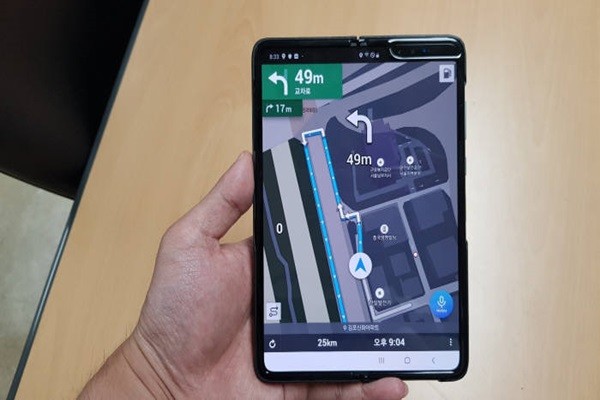Samsung Electronics has decided to release clamshell design foldable Smartphone with UTG (Ultra Thin Glass). While Samsung Electronics applied transparent PI (polyimide) as the cover glass material for its first foldable Smartphone, it has decided to use UTG for the next foldable Smartphone for the first time. It is likely that its next foldable Smartphone will be released during the first half of next year.
According to the industry, Samsung Electronics and Samsung Display have decided to release a foldable Smartphone based on clamshell design and is applied with UTG and have started producing necessary components.
Samsung Display has started producing foldable displays for clamshell design while DOWOO INSYS that supplies UTG has started the production of initial supply.
UTG is a thinner cover glass that goes through additional tempered process. Each UTG manufacturers uses its own method and does not make its knowhow on its core technology public.
UTG material that will be used by Samsung is based on DOWOO INSYS’ method and SCHOTT AG’s glass. Samsung Electronics and Samsung Display had tested UTG materials from many domestic and foreign companies and they have ultimately decided to apply DOWOO INSYS’ method to SCHOTT AG’s glass.
Samsung Electronics has been using Corning’s Gorilla Glass as the cover glass material for its Smartphones. However, it is inevitable that the dynamics within the cover glass market will change in the future as SCHOTT and DOWOO INSYS have entered the market due to the release of foldable Smartphone. Current glass suppliers such as Corning, Asahi, and NEG have developed foldable glass materials and are preparing to enter the market.
DOWOO INSYS, which was established in 2010, is seen to have world’s best technology when it comes to ultrathin glass that has thickness of less than 100 micrometers and it has been working with Samsung for a while. It signed an exclusive supply contract with Samsung Display and has been preparing the development and the production of UTG.
“Although Samsung had looked into many different UTG manufacturers, DOWOO INSYHS clearly has the best technical skills when it comes to UTG.” said a representative for the industry. “Its technical skills are 4 to 5 years ahead of its competitors.”

The design of a foldable Smartphone that Samsung Electronics will be introducing next year is similar to that of foldable feature phones in the past. It is expected that Samsung Electronics’ next foldable Smartphone will be folded at the center where there is a horizontal fold. Because it is expected to be longer but has a narrower screen than Galaxy Fold, it focuses on portability rather than large screen. It is likely that the size of its display will be 6.7 inches.
Galaxy Fold is like a book as it is folded at the center where there is a vertical fold. Because one can enjoy a 7.3-inch screen when Galaxy Fold is laid out, Samsung has received positive reviews for securing usability as Galaxy Fold combines Smartphone and tablet features.
Although Samsung has decided on a design that is completely different from that of Galaxy Fold for its next foldable Smartphone, it has yet to decide on the release date.
The industry initially predicted that Samsung would announce the release date of Samsung’s next foldable Smartphone sometime during the first quarter of next year. However, there is a high chance that Samsung will adjust the timing on the announcement and the release date of its next foldable Smartphone due to positive reactions on Galaxy Fold from the market. It is estimated that the price of Samsung’s next foldable Smartphone will be around $1,500 that is cheaper than the price of Galaxy Fold ($1,980).
“Although Samsung is applying UTG material to clamshell design for the first time, there is a chance that Samsung will use transparent PI material for the next model for Galaxy Fold that will be introduced in the second half of next year.” said a different representative for the industry. “Although UTG is excellent when it comes to aesthetic impression, it will take some time for UTG to be used on other Smartphones as it is more fragile than transparent PI and has high production cost with not enough production capability and yield rate.”
Staff Reporter Bae, Okjin | withok@etnews.com